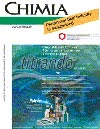Publication
634
Chimia 62, 742-749, 2008.
DOI:
10.2533/chimia.2008.742
|
|
|
|
|
|
 |
DNA Damage and Radical Reactions: Mechanistic Aspects, Formation in Cells and Repair Studies
|
|
|
|
|
|
|
|
Cadet, Jean; Carell, Thomas; Cellai, Luciano; Chatgilialoglu, Chryssostomos; Gimisis, Thanasis; Miranda, Miguel; O'Neill, Peter; Ravanat, Jean-Luc; Robert, Marc
Laboratoire de Thermodynamique et Interactions Moléculaires, Université Blaise Pascal, Aubière, France, and Laboratoire d’Electrochimie Moléculaire, Université Paris Diderot, UMR CNRS 7591, 2 place Jussieu, 75251 Paris Cedex 05, France
Several examples of oxidative and reductive reactions of DNA components that lead to single and tandem modifications are discussed in this review. These include nucleophilic addition reactions of the one-electron oxidation-mediated guanine radical cation and the one-electron reduced intermediate of 8-bromopurine 2'-deoxyribonucleosides that give rise to either an oxidizing guanine radical or related 5',8-cyclopurine nucleosides. In addition, mechanistic insights into the reductive pathways involved in the photolyase induced reversal of cyclobutadipyrimidine and pyrimidine (6-4) pyrimidone photoproducts are provided. Evidence for the occurrence and validation in cellular DNA of ĽOH radical degradation pathways of guanine that have been established in model systems has been gained from the accurate measurement of degradation products. Relevant information on biochemical aspects of the repair of single and clustered oxidatively generated damage to DNA has been gained from deta led investigations that rely on the synthesis of suitable modified probes. Thus the preparation of stable carbocyclic derivatives of purine nucleoside containing defined sequence oligonucleotides has allowed detailed crystallographic studies of the recognition step of the base damage by enzymes implicated in the base excision repair (BER) pathway. Detailed insights are provided on the BER processing of non-double strand break bistranded clustered damage that may consist of base lesions, a single strand break or abasic sites and represent one of the main deleterious classes of radiation-induced DNA damage. |

